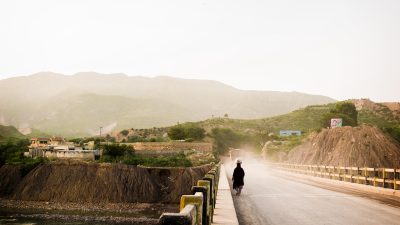A Natural Disaster or a Man-Made Catastrophe That Changed India Forever
The Chalisa Famine of 1783 stands as one of the most devastating famines in Indian history, leaving behind widespread death, suffering, and economic turmoil. While extreme weather conditions were a major factor, administrative failures, exploitation, and negligence worsened the crisis. This article explores the causes, impact, and lasting effects of the Chalisa Famine, raising the question—was it solely a natural disaster, or did human actions intensify its consequences?
The Perfect Storm: How Climate, Greed, and Mismanagement Led to the Chalisa Famine
The famine was largely triggered by severe drought, caused by the El Niño effect, which disrupted the monsoon cycle. With little to no rainfall in 1782, agricultural output in 1783 collapsed, resulting in acute food shortages. Rivers dried up, and vast farmlands turned barren, forcing agrarian communities into desperation.
However, the crisis was not entirely nature’s doing. The Mughal Empire, already in decline, failed to implement necessary relief measures. Meanwhile, the British East India Company, which had gained control over various regions, continued imposing harsh taxes and prioritising trade over humanitarian aid. Forced grain exports and administrative inefficiencies transformed a drought into a widespread famine, leading to catastrophic losses.
Death Toll, Starvation, and the Collapse of Society
- Countless Lives Lost: While precise figures remain unknown, historical records suggest that millions succumbed to starvation, malnutrition, and disease, leaving many areas desolate.
- Outbreaks of Epidemics: Weakened by hunger, survivors fell victim to deadly diseases such as cholera, dysentery, and smallpox, which further escalated the death toll.
- Mass Migration & Displacement: Entire families abandoned their homes, migrating to cities in search of food, only to find overcrowded shelters and little to no aid. Many perished on their journey, while others were forced into exploitative labour or prostitution.
The Mughal Empire’s Inaction: Could the Famine Have Been Averted?
By the late 18th century, the Mughal Empire was struggling to maintain administrative control, particularly in northern India, where the famine hit hardest. Corruption among local rulers and landlords worsened the crisis, as hoarding and black-market trading of grain became rampant.
Unlike later governance models that introduced food relief programmes, there was no systematic effort to distribute resources or stabilise food prices. The lack of a structured response aggravated the situation, leaving the common people to fend for themselves against starvation and disease.
The British East India Company: Did Their Policies Worsen the Crisis?
As the British East India Company strengthened its grip on India, their exploitative policies deepened the suffering. Despite the famine, high taxes remained in place, pushing farmers to sell what little produce they had, leaving them with nothing to survive on.
To add to the misery, grain exports continued, favouring the Company’s economic interests over humanitarian concerns. Large quantities of food were transported to feed British troops or sold to other regions, exacerbating the shortage for those most in need.
The Struggle for Survival: How People Endured the Chalisa Famine
Survival during the Chalisa Famine was a gruelling ordeal. With little to no relief, people had to resort to extreme measures to stay alive.
- Eating Unthinkable Substitutes: With no access to food, people consumed tree bark, leaves, and even carcasses. There were reports of cannibalism, as desperation drove individuals to the unthinkable.
- Riots & Looting: As conditions deteriorated, starving mobs raided grain stores, attacked traders, and turned to violence in a desperate bid for survival.
- Desertion of Families: Parents, unable to feed their children, abandoned them in the hope that they might find help elsewhere. The streets were filled with orphaned and starving children.
The Voices of the Suffering: Eyewitness Accounts of the Chalisa Famine
Historical records and personal testimonies provide harrowing accounts of the famine’s brutality. British officials and Mughal nobles documented the horrors—streets littered with corpses, desperate mothers leaving infants behind, and people turning to inhumane methods to stay alive.
While some benevolent individuals and religious institutions attempted to offer aid, their efforts were no match for the overwhelming scale of the catastrophe. The famine’s impact left deep scars on society, haunting generations to come.
Can a Chalisa-like Famine Happen Again?
The Chalisa Famine serves as a stark warning about the dangers of extreme climate events, poor governance, and economic exploitation. While modern advancements in food security and relief efforts have reduced the likelihood of such large-scale famines, vulnerabilities remain.
Today, regions facing prolonged droughts, conflict, or political instability continue to experience famine-like conditions. With climate change worsening weather patterns, the risk of food crises is far from over. Without proactive measures, history could repeat itself.
The Long-Term Impact: How the Chalisa Famine Shaped India’s Future
The famine had far-reaching consequences, crippling agriculture and local economies. The devastation left communities weaker and more dependent on external governance, which made them susceptible to increased British control.
Furthermore, the famine highlighted the failure of both the Mughal and British administrations in preventing such disasters. The inability to provide food security left a lasting impact, contributing to India’s vulnerability under colonial rule.
Remembering the Chalisa Famine: A Lesson in History
The Chalisa Famine is more than just a historical tragedy—it is a reminder of how political negligence, climate disasters, and economic policies can turn a natural event into a humanitarian catastrophe. Recognising these past failures is essential to preventing similar tragedies in the future.
By studying history, we can ensure that no community ever has to endure such suffering again.
FAQs
1. What was the Chalisa Famine of 1783?
The Chalisa Famine was a catastrophic food crisis in North India caused by severe drought and monsoon failure, leading to mass starvation.
2. How many people died during the Chalisa Famine?
While precise numbers remain uncertain, historical estimates suggest millions perished due to hunger and disease.
3. What role did the British East India Company play in the famine?
The British continued collecting taxes and exporting grain despite widespread starvation, worsening the crisis.
4. Could the Chalisa Famine have been prevented?
Yes, better governance, early relief efforts, and regulated food distribution could have mitigated its devastating effects.
5. How did the Chalisa Famine shape India’s future?
It weakened local economies, increased dependency on external rule, and contributed to further British dominance in India.
References:
Chalisa Famine
The Deadliest Famines in History
Disasters with Highest Death Tolls: Chalisa Famine
Forgetting the Famines (Talk by Amardeep Singh)




